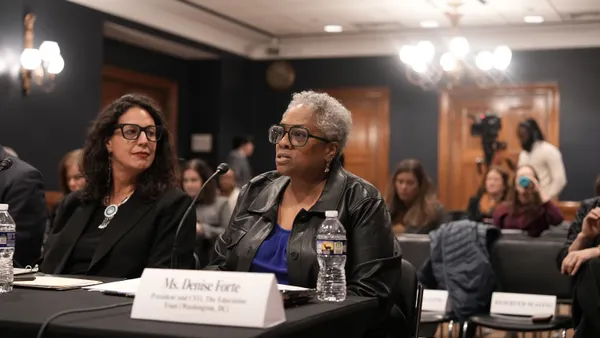Navigating the educational landscape can be a complex journey for children and adolescents with Attention-Deficit / Hyperactivity Disorder (ADHD). Nearly 10% of kids aged 3 to 17 had been diagnosed with ADHD as of 2019, according to the latest data from the Centers for Disease Control and Prevention. Given the recent increase in referrals for ADHD assessment, it’s likely that the share of students diagnosed with ADHD is much higher today.
“There is concern in schools regarding the increased prevalence of behaviors typically associated with ADHD, which can impact classrooms due to disruptions, inattention and social disengagement,” says Kathleen Woodward, a nationally certified school psychologist and a senior assessment consultant for Pearson. “One of the key challenges educators are currently facing is how to determine whether a referral for an evaluation is warranted or if a student's behavior can adequately be addressed in the classroom.”
As educators grapple with providing adequate support for students with ADHD, they’re finding it’s effective to adopt a team approach in which educators and caregivers work together to forge a path toward academic and social success. Here’s how educators can create an empowering learning environment and adopt a spirit of collaboration with caregivers.
The challenges of executive functioning for students with ADHD
Executive function challenges are a considerable barrier for students with ADHD. And they can affect students’ ability to enjoy a positive learning experience.
Executive function refers to a set of skills that control the capacity to plan ahead and meet goals, display self-control, follow multiple-step directions and stay focused despite distractions, among other skills, according to the Center on the Developing Child at Harvard University.
Challenges involving executive function aren’t unique to students with ADHD, Woodward notes. “Any student with ADHD has impairments in executive function, but not all students with impairments in executive function have ADHD.”
She points out that most people experience some level of issues with executive function, such as being prone to procrastination or having a tendency to become easily distracted.
“However,” she continues, “students with ADHD need extra support to reduce the impact of those executive function challenges on their daily lives.”
3 tips for working with families to overcome executive function deficits
As educators aim to help students with ADHD learn to their fullest potential, it’s crucial to provide the necessary accommodations during the school day. Ideally, these should be executed consistently across the classroom and home environments. While home/school collaboration is effective for all students, the consistency it creates is particularly important for students with ADHD.
Here are three steps to consider when working with caregivers to support these students:
1. Create open lines of communication with families.
Some caregivers may not realize the substantial role they can play in supporting their child with ADHD, especially if they rely on points of reference such as experiences with siblings who don’t have ADHD. It’s essential to communicate with families about struggles unique to a student with ADHD and the positive impact of routines.
“Relationships can be strained between caregivers and students with ADHD, but typically it’s just a matter of providing the family with more education to understand the behaviors better — explaining what ADHD is and how it manifests,” Woodward explains. “The issue with ADHD is that often we blame the student for their behavior when really it's out of their control. When they're not paying attention, actively reject something or struggle to manage their emotions, it's not necessarily a willful decision on their part. It's something they're dealing with neuro-developmentally.”
She recommends the discussion with families include the type of interventions a student is receiving and related expectations. For example, students on an Individualized Education Program (IEP) have services that are required, while those with a 504 plan will receive agreed-upon accommodations. “It’s important for families to know the difference so they can ensure their child is receiving the necessary support,” Woodward says. It’s also important for educators and caregivers to understand the role ADHD medications play in treating symptoms.
2. Use a planner-based system across school and home environments.
Effective planning is a substantial hurdle for students with ADHD. They may fail to write down assignments or bring the necessary materials home, which can hinder achievement. That’s where a school interventionist and caregiver can work together, with a daily planner as their guide.
A school interventionist can assist by helping students fill out their planners, highlighting assignments and due dates, and ensuring they are equipped with the requisite materials. Then caregivers can review the planner, confirming they understand the assignment and timeline and that the student has the appropriate materials to complete it, which gives them a framework for assisting at home.
“It’s not about doing the homework for them, but acting as an ally in setting them up for success,” Woodard says. That might include finding a calm space to work, laying out the materials, reiterating the directions and then helping them stay on task with timers or other assists.
3. Use a daily behavior report card.
This handy tool, part of the BASC-3 Intervention Guide, is filled out by a student’s primary teacher or multiple teachers as it follows the student throughout the day. Educators will pay attention to specific behaviors or skills the child is working to address. For example, if they have a writing project due, teachers will monitor related progress and behavior and then alert families as to how they can provide support. The feedback loop continues at home, where the family can read the day’s observations and add their own updates from the evening’s events.
The report card system can analyze patterns, too. For example, educators can note accomplishments and set new goals when a student improves, or they can adjust an intervention if behavior is declining. “This ensures everyone is on the same page, and together they can assess how the student is progressing and make potential adjustments,” Woodward says.
Unified ADHD support empowers students, educators and families
Consistent interventions across home and school environments set students up for lifelong success, Woodward says. “It’s crucial that educators, families and communities as a whole learn more about ADHD and how informed supports can lead to a better school experience.”
To access useful intervention guides and other tools, check out Pearson Assessments’ ADHD Toolkit.







 Dive Awards
Dive Awards



